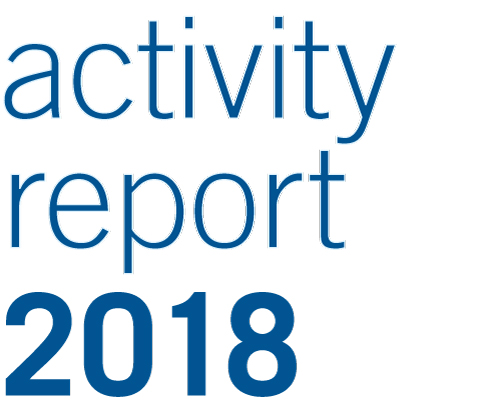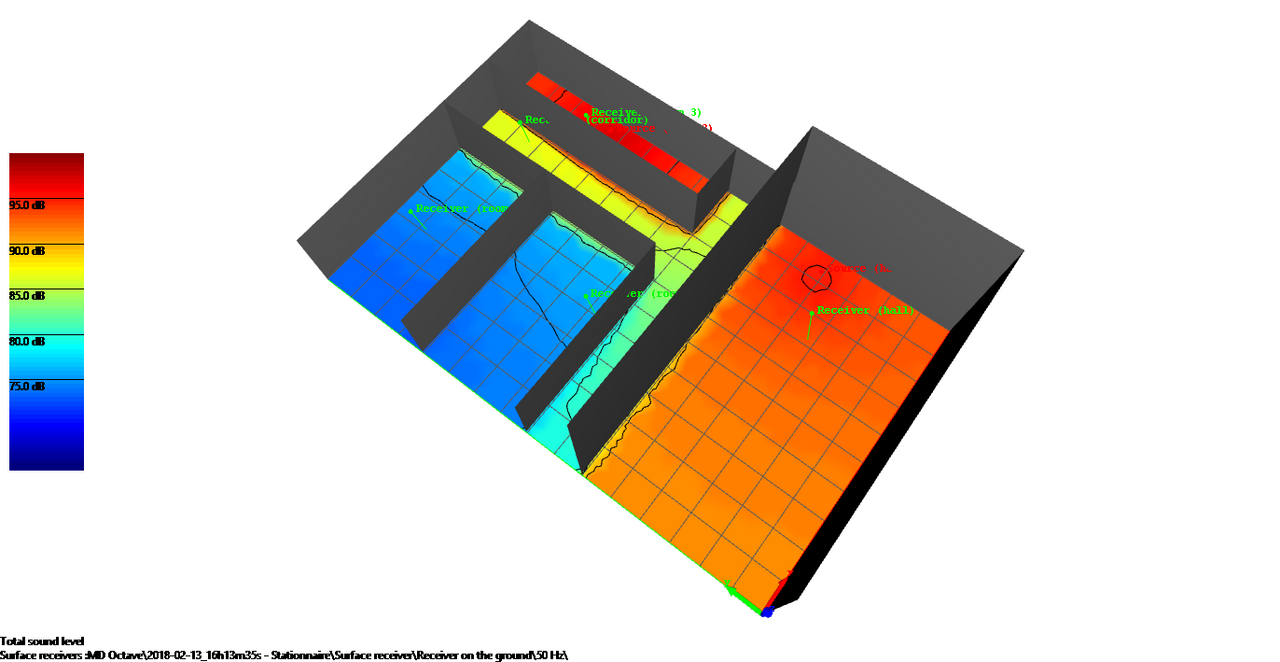The OPALHA2 project focused on the development of an acoustic prediction tool for architectural and urban environments, which can be applied in complex coupled spaces in order to overcome the limitations of traditional prediction tools in this type of space. This tool is based on a scattering model, which calculates the spatial and temporal distribution of sound energy in a complex and diffuse space using scattering equations. Although this model has already been studied in the past, further work was needed to improve its performance (due to scientific obstacles), and also to propose a functional computation code. We have therefore focused on studying the behaviour of the model in specific cases, for which the scattering model has sometimes been found to be defective: in the presence of mixed reflection conditions on walls, in the direct vicinity of coupling zones and for elongated geometries. At the same time, we have developed a dedicated computation code (MD_Octave), which is embedded within the I-Simpa acoustic simulation platform. A large amount of work has also been done to take advantage of the research that has been carried out around the scattering model (and more broadly the I-Simpa environment), through the free dissemination of all the source codes and the availability of resources on a dedicated web site.
Understanding, assessing and mitigating environmental and human impacts
Air pollution and noise are transport’s two main externalities, and their adverse impacts on health are proven. The WHO has just highlighted in a recently published guide that noise poses a major threat to the environment and public health. IFSTTAR studied the health impacts of exposure to aircraft noise in the context of the DEBATS study, whose novelty lies in its several-year follow-up and the various impacts studied (disturbance, impact on sleep, as well as pathophysiological effects). IFSTTAR is also working on quantifying and characterising the noise emitted by vehicles (such as public transport vehicles) and modelling its propagation in order to better predict and manage the noise environment in which we live.
Regarding air pollution, considerable progress has been made in recent years to limit vehicle emissions. The characterisation of pollutant emissions from vehicle exhaust continues to be the subject of much research. On the other hand, non-tailpipe particulate emissions have been less studied, despite the fact that they pose an equally significant health risk and are completely unregulated. This is a gap in our knowledge that IFSTTAR is trying to fill, through the CAPTATUS project in particular.
The DEBATS Project - Effects of Aircraft Noise on Sleep
Aircraft noise is a significant nuisance and a major public health problem, particularly with regard to sleep disruption. Ali-Mohamed Nassur's research, for a PhD thesis which was defended on 7 December 2018, set out to better understand and quantify the effects of aircraft noise on the sleep quality of people living near airports in France, by differentiating between sleep quality, as assessed subjectively using a questionnaire and objectively using an actimeter (a watch that records the body's movements during sleep). To meet these goals, the data collected in an epidemiological research programme known as DEBATS (Discussion on the Effects of Aircraft Noise on Health) were analysed.
The existence of a link was demonstrated between exposure to aircraft noise at night and the quality of sleep assessed by questionnaire and characterised by a risk of reporting less than 6 hours of sleep per night and of feeling tired upon waking. A link was also observed between exposure to aircraft noise and objective sleep quality parameters with an increase in sleep time and duration of intra-sleep awakening, a decrease in sleep efficiency, but also an increase in total sleep time and time spent in bed (the latter can be interpreted as a mechanism for adapting to sleep deprivation). Finally, a significant increase in heart rate amplitude during a noise event caused by the passage of an aircraft and the maximum noise level of that event was found.
These results, most of which are similar to those obtained by the majority of studies in the international literature, confirm that exposure to aircraft noise can reduce sleep quality, whether it is assessed subjectively by means of a questionnaire or measured objectively.
The OPALHA2 Project - An Open-Source computation code for acoustic prediction in complex architectural spaces
Bus noise emissions - Expert assessment for Keolis/Rennes
In 2018, IFSTTAR was asked by Rennes Métropole to evaluate the noise emissions of an electric bus and a conventionally powered bus that is typical of the current fleet of vehicles running on the Rennes public transport network (STAR) which is operated by Keolis Rennes.
This experimental campaign, based on measurements made under conditions that are representative of actual vehicle use (steady speeds, acceleration and deceleration phases), shows clear noise emissions benefits for the electric bus under speed conditions for which rolling noise is not the principal source. The results obtained are fully in line with what has been observed elsewhere on other electrically powered vehicles.
The CAPTATUS Project
This project is funded by ADEME and aims to characterise non-tailpipe particulate matter, both physically and chemically. These particles are generated by friction in the engine compartment, brake system or during tyre-road contact. Monitoring and collection of these particulate emissions was performed on engine roller benches, test tracks and roads. The tests revealed significant changes in the chemical composition of PHEs, their particle size and emission dynamics with driving style, as well as the characteristics of the vehicle and the infrastructure. This has made it possible to propose driving styles that can limit the intensity of non-tailpipe particulate emissions. Finally, chemical indicators and particle size signatures were proposed in order to track these particulates in the atmosphere around roads.




